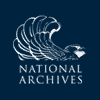To Thomas Jefferson from Therese Ceracchi, 3 December 1802
From Therese Ceracchi
Rome, ce 3. Décembre 1802.
La tendre amitié que vous avez daigné témoigner à mon époux, pendant son séjour à Philadelphie me fait esperer, généreux Jefferson, que vous aurez la complaisance de lire la lettre cijointe. Elle vous fera connaitre au vrai toute l’horreur de ma situation présente et les besoins urgens de ma nombreuse famille. Les moyens que mon ami ose vous proposer sont faciles, il ne dépendra que de vous d’en voir l’exécution. Un seul mot de vous peut tout. Veuillez le prononcer et la veuve de l’infortuné Ceracchi sortira de l’abyme affreux dans lequel elle est perdue.
Comme mon ami se prépare à un voyage, je vous prierai de vouloir bien nous faire parvenir votre réponse par la voie du Consul Américain à Livourne, sous le couvert de M. Chiassi, Negociant, Place d’Espagne. Cette complaisance de votre part me sera très sensible.
J’ai l’honneur de vous assurer de mes profonds respects et de ma haute Considération.
Thérèse Ceracchi
Editors’ Translation
Rome, 3 Dec. 1802
The warm friendship you kindly showed my husband during his stay in Philadelphia prompts me to hope, generous Mr. Jefferson, that you will be good enough to read the enclosed letter. It reveals all the horror of my current situation and the urgent needs of my large family. The plan my friend dares propose is simple; its execution rests entirely in your hands. One word from you can make everything happen. If you say that word, the widow of the unfortunate Ceracchi will emerge from the awful abyss in which she is lost.
Since my friend is about to depart, I ask you to respond through the American consul in Leghorn, care of Mr. Chiassi, merchant, Place d’Espagne. I would be very grateful for this kind gesture on your part.
I am honored to assure you of my deep respect and highest regards.
Thérèse Ceracchi
RC (DLC); endorsed by TJ as received 20 Feb. 1803 and so recorded in SJL. Enclosure: Arsenne Thiébaut de Berneaud to TJ, 19 Nov.
Therese Schliesshan Ceracchi met Giuseppe Ceracchi in Vienna, where the artist worked during the early 1780s. They married in 1785. She remained in Europe during her husband’s first trip to the United States in the early 1790s, but accompanied him, with their children, on his second trip in 1794. During that stay they lived in Philadelphia and dined on one occasion with President Washington and his family. After her husband’s death in 1801, Therese succeeded in selling some of his works (Giuseppe Ceracchi: Scultore Giacobino, 1751–1801 [Rome, 1989], 45; Ulysse Desportes, “Giuseppe Ceracchi in America and His Busts of George Washington,” Art Quarterly, 26 [1963], 146, 152, 160, 164, 169).
consul américain à livourne: Thomas Appleton was the U.S. consul at Leghorn (Vol. 37:253). The business of Gaetano chiassi, a cloth merchant, was a meeting place for political activists during the Roman Republic formed in 1798 (Fabio Tarzia, Libri e rivoluzioni: Figure e mentalità nella Roma di fine ancien régime [1770–1800] [Milano, 2000], 229; Vol. 30:68n).

![University of Virginia Press [link will open in a new window] University of Virginia Press](/lib/media/rotunda-white-on-blue.png)
